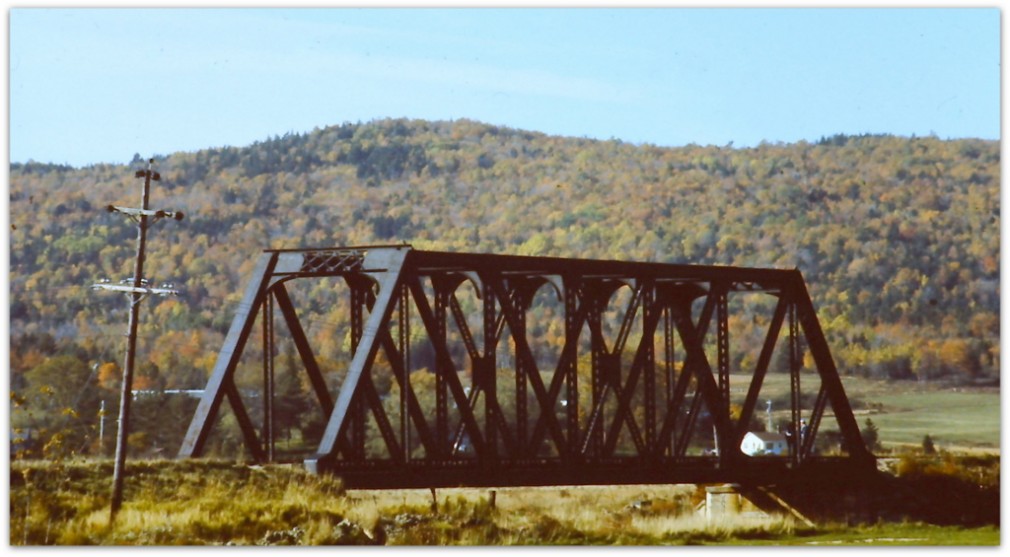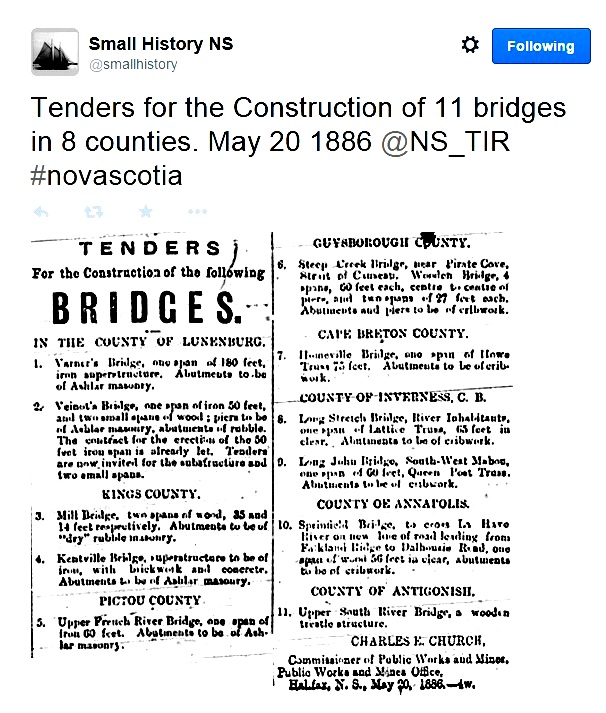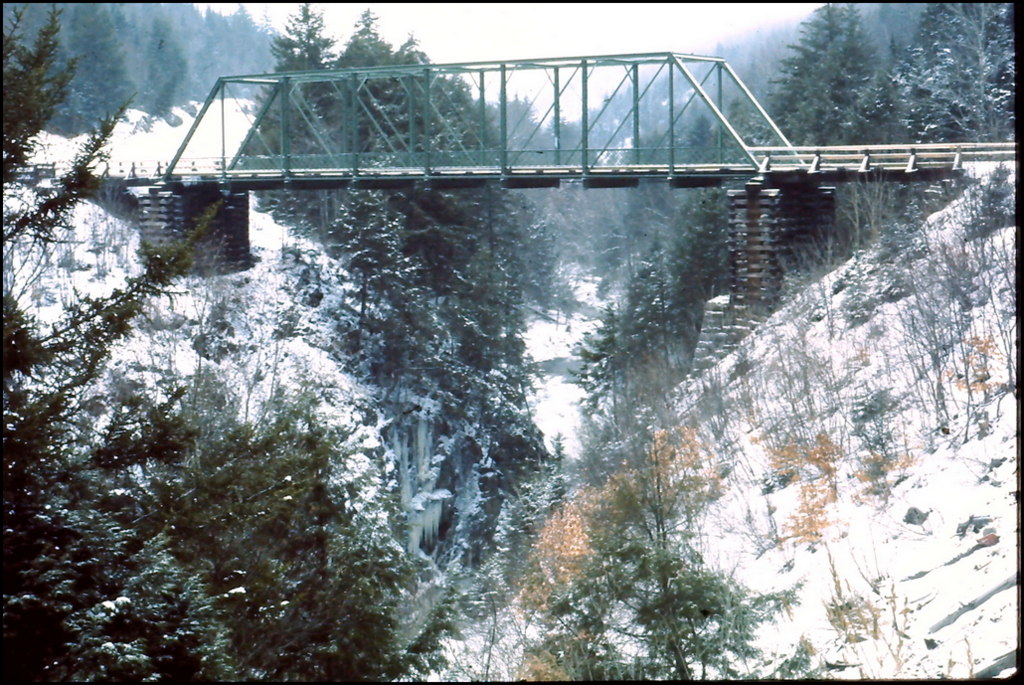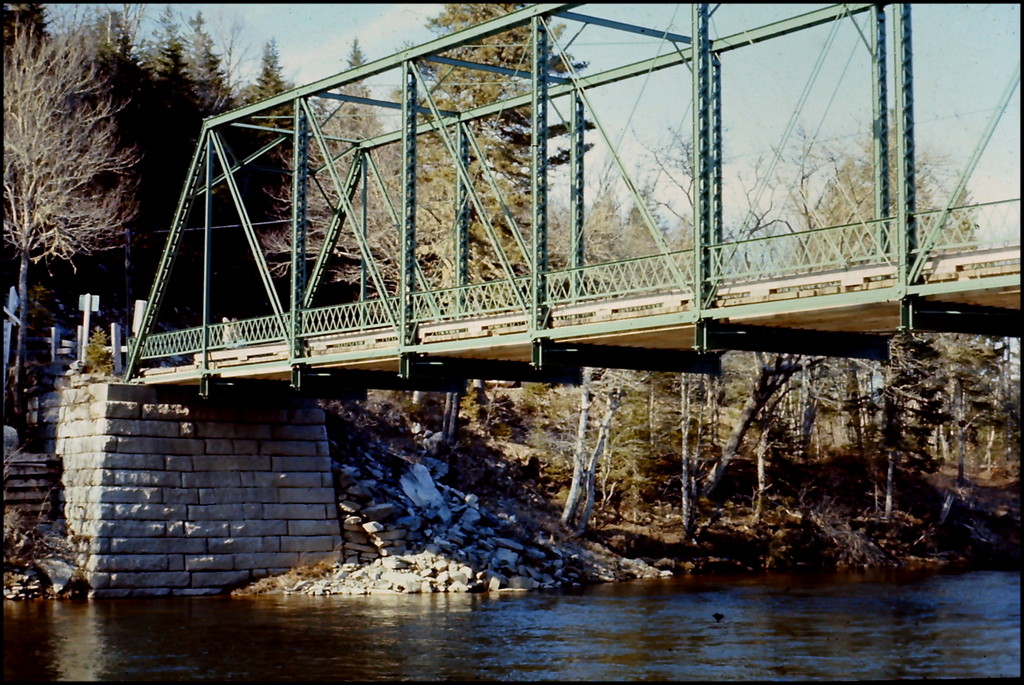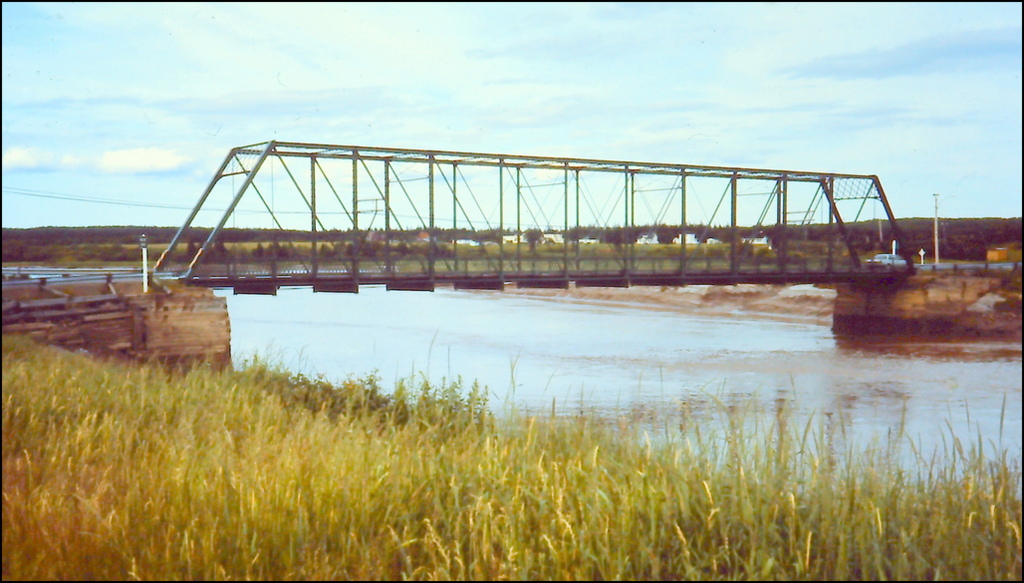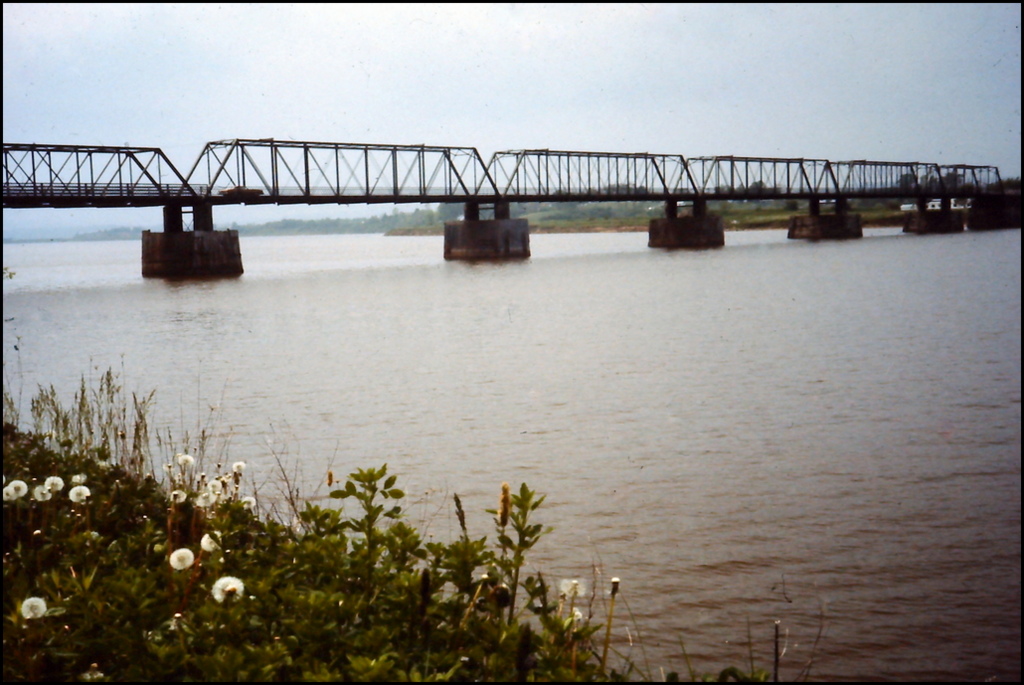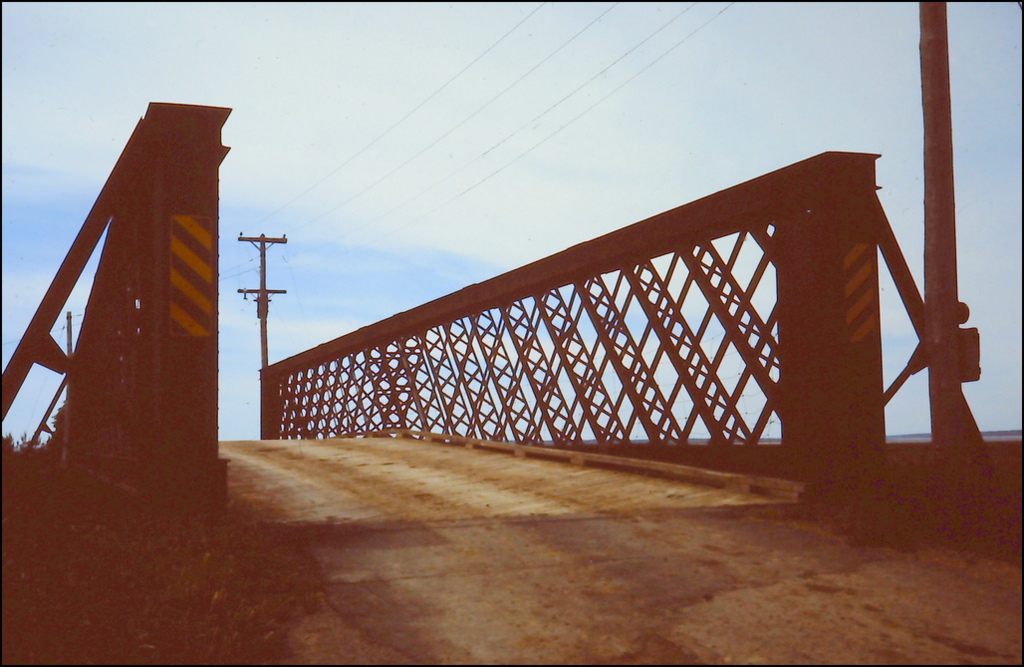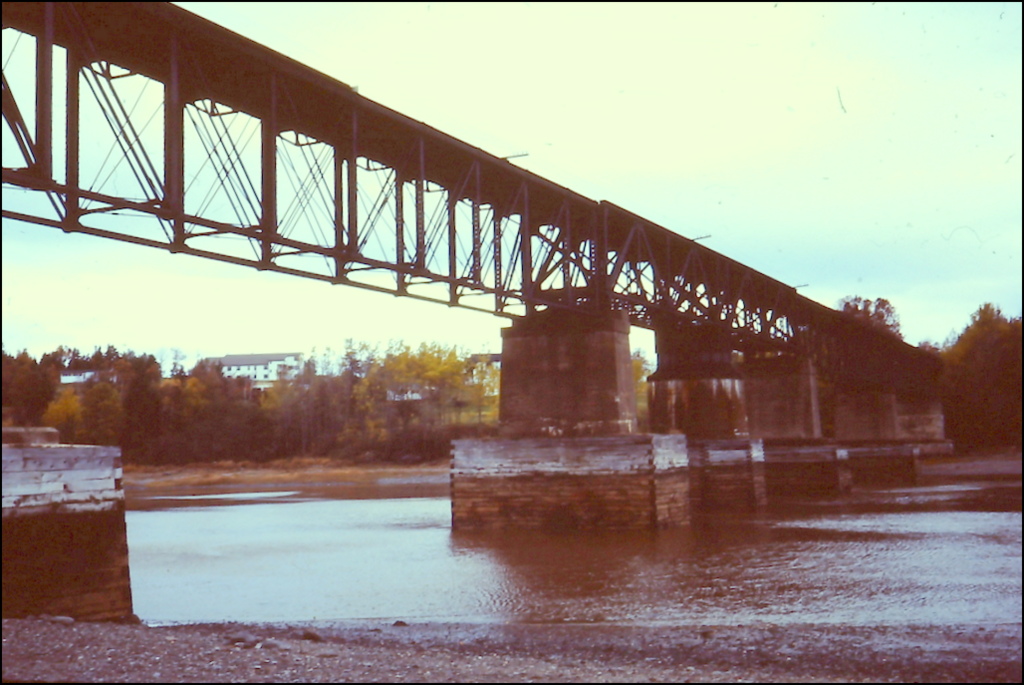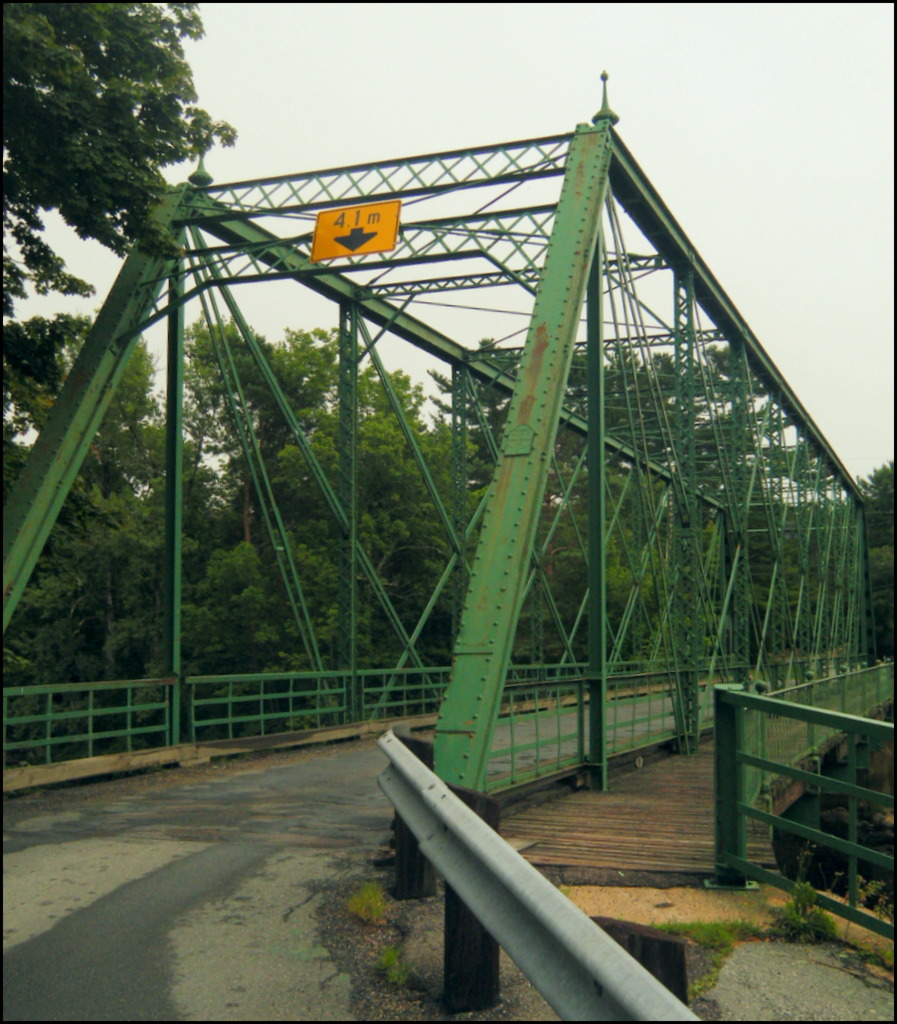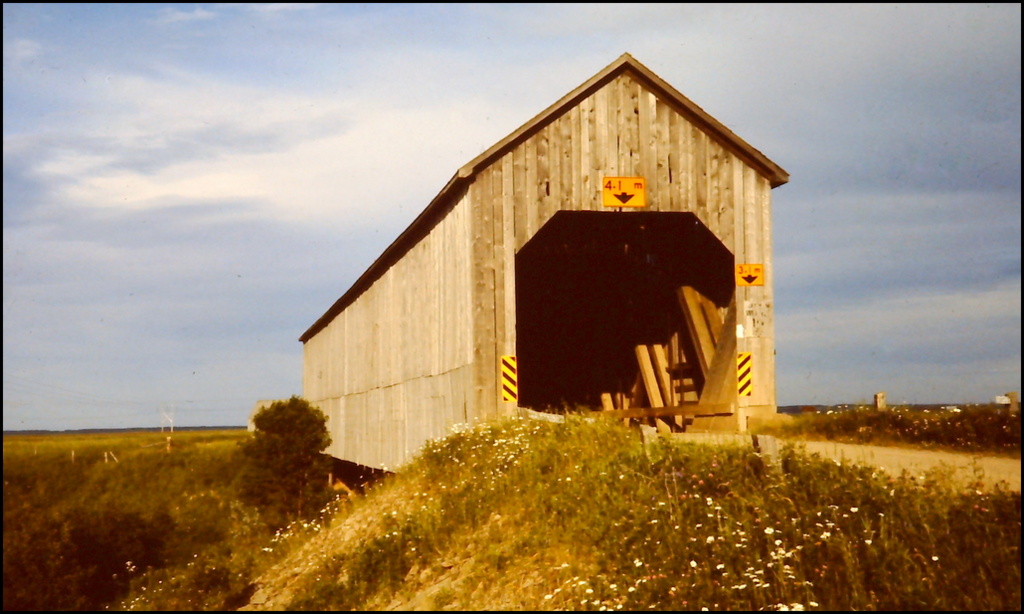Do you have iron bridge experiences? Single lane, shakes when a vehicle crosses, transparent in the landscape. In the mid 70s I learned that the various styles of bridge trusses have names and started taking more notice and occasionally snapping a picture.
Last evening I was reminded of these bridges when Small History NS tweeted an 1886 advertisement for bridge tenders ( if you are not following Small History on Twitter you are missing such a treat ).
The 1880s was the beginning of a great bridge building period in Nova Scotia and many of our iron bridges dated from this period (a guess they really are steel) . One of the most picturesque of these truss bridges crossed a gorge near Londonderry, Colchester County. This photo is from 1976; is the bridge still there?
Isn’t that a beautiful piece of engineering? The balance of elements under tension and compression. There were hundreds of similar bridges in the province. Here is another 1976 photo of the bridge at Stillwater, above Sherbrooke on the St Marys River. Twitter tells me it still exists and that there is a magnificent view from it in foliage season.
Here is a long span, I believe at River Hebert.
For very wide rivers multiple trusses were required. At Annapolis Royal and Windsor such bridges were replaced by causeways, with drastic consequences for the rivers. Here is the rail bridge at Windsor before the line was moved onto the causeway (flow gently sweet Avon).
I believe that most of the smaller bridges in Nova Scotia are Pratt trusses. At Bridgetown there was a Camel Back truss (Google trusses if you want the power to name).
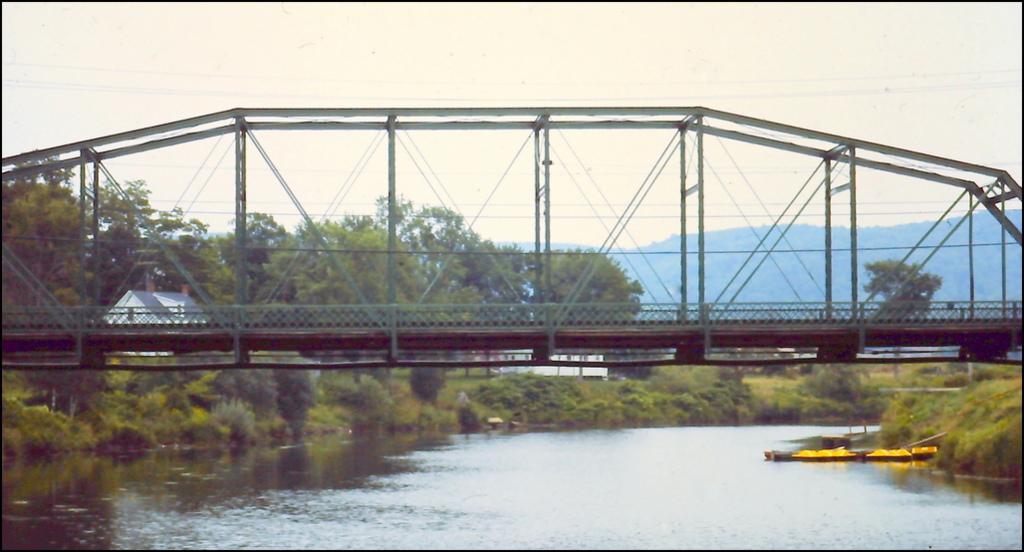
Most of our bridges are through trusses, but smaller bridges are sometimes pony trusses where the sides are not tied together at the top. This bridge was over the rail line near Amherst.
Long rail bridges were often deck trusses, where the road bed was on top. Scary to walk across, particularly if you didn’t know the train schedule. The bridge over the Moose River at Clementsport had a swing section so sailing ships could pass. This was a feature on a number of our bridges.
In 2003 the provincial government said there were still 200 steel truss bridges in the province and announced a program to replace 66 of them. I’m aware of a community group in Mill Village, Queens County that has worked with the Department of Transportation to preserve the bridge in their community. I believe the group was raising money to pay for painting the bridge.
The Mill Village bridge was manufactured by the King Bridge Co of Cleveland but there were a number of Nova Scotian bridge builders. For example, in 1887 the Truro Foundry had contracts for 4 bridges and John Stewart of New Glasgow had contracts for 3.
The Charleston bridge, just up the Medway River from Mill Village, provides a cautionary tale. In July 2000 a loaded pulp truck snagged the truss and the bridge collapsed. Pulp trucks and snow plows are top predators of these century old bridges.
As you travel the province this summer, keep your eye out for our older bridges. You will have to slow down anyway because they are all one lane.
Post Script
- Here I’m not sure of the real facts but I like the idea that when Nova Scotia passed the Bridge Act in 1883 we consciously choose to embrace the modern world by replacing wooden bridges with new steel trusses. The existing and decaying bridges at that time were made of wooden trusses covered with a wood roof and walls – the covered bridge. A few of these survived up until the 50s. I remember an ancient feeling covered bridge at Hortonville that all traffic to the Annapolis Valley had to cross.
- Timber-rich New Brunswick choose to keep building wooden truss bridges which they now treasure for their picturesque value. Here is a bridge on the Tantramar Marsh, in sight of Nova Scotia. You can get a hint of the truss structure.
- The bridge discussion on Twitter got started when Halifax Bloggers colleague Peter Ziobrowski (BuiltHalifax) tweeted the concept drawing for a new bridge at Sheet Harbour.
 It will replace this striking 1950s span.
It will replace this striking 1950s span.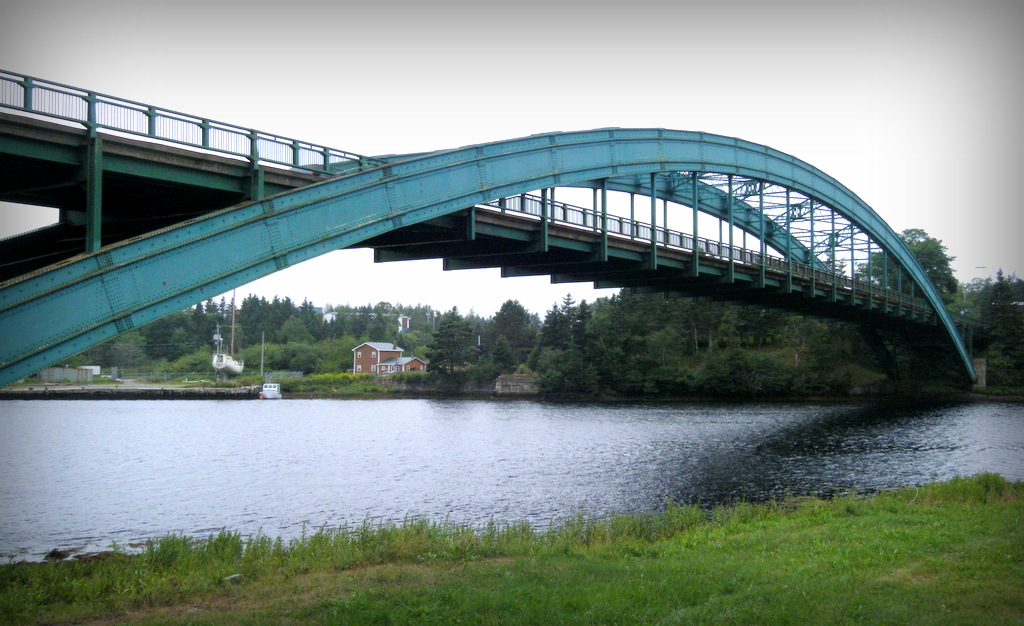 I guess 50 years from now some blogger will be excited about the charms of early millennial civil engineering. Don’t look at me.
I guess 50 years from now some blogger will be excited about the charms of early millennial civil engineering. Don’t look at me.





